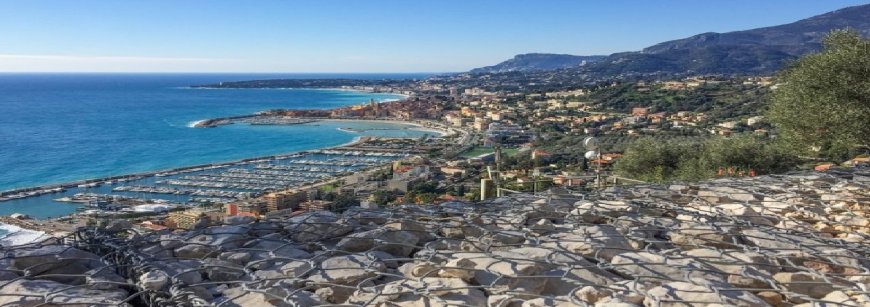Maccaferri celebrates 130th anniversary of the gabion

Officine Maccaferri, a global leader in civil and environmental engineering, celebrated the 130th anniversary of the gabion, the Group’s most iconic product, which was designed to create riverbanks and retention works to fight hydrogeological instability.
The anniversary was marked within the Shapers of the Future event, attended by the President of the Emilia-Romagna Region Stefano Bonaccini, the Dean of the University of Bologna Giovanni Molari, and the Deputy Minister of Infrastructure and Transport Galeazzo Bignami, who, together with the Executive Chairman and CEO of Officine Maccaferri, offered their testimony about the challenges and opportunities related to sustainability.
The gabion was first installed in 1894 near the Chiusa di Casalecchio di Reno to rebuild the riverbanks, after a forceful flood struck the local community. Since then, Maccaferri gabion, a symbol of sustainable engineering, has been spreading across five continents and has been installed in every country in the world, representing the Group’s hallmark of constant innovation and focus on social and environmental sustainability. The gabion, renowned for its flexibility, permeability and sustainability, has changed the face of civil engineering and has been a forerunner in the green transition, owing to its low environmental impact and adaptability.
Over its 130-year-long history, Maccaferri gabion has been used in the world’s most modern sustainable engineering projects: along the banks of the Bristol Channel, in Wales, with one of the first applications of PVC-coated wire gabions, along the River Arno in Florence, to tackle the consequences of the 1966 flood, for soil protection on the island of Santiago, Cape Verde, and, more recently, for the upgrading works of the Novo Pinheiros, one of the most important rivers in São Paulo, Brazil, and for building the Oosterweel Link, a key work for the Antwerp road system.
In today’s context marked by increasingly pressing environmental challenges, worsening climate change consequences and hydrogeological instability issues, the Group continues to steadily focus its efforts on enhancing the sustainable performance profile of its products, thus addressing the need for solutions aimed at fostering infrastructural development that is not only sustainable and in harmony with the nature, but also makes its very own contribution. Today, Maccaferri works in more than 130 countries worldwide and employs around 3000 people, of which more than 750 are specialised engineers.
“The 130-year history of the gabion embodies all the elements shaping Officine Maccaferri as a world leader in its sector. It is the ability to generate sustainable and tangible solutions to build a sound relationship between human beings and the environment, based on a philosophy that is constantly striving for innovation. It is a blend of vision and engineering excellence that has also made the gabion the epitome of Officine Maccaferri’s and Made in Italy’s ability to overcome its own boundaries, displaying a globally recognised leadership,” said Sergio Iasi, Executive Chairman of Officine Maccaferri. “Over the years, gabions have met the most critical local needs, turning environmental challenges into global opportunities. Out of that double-twist mesh, a comprehensive and unique portfolio of solutions has been developed, featuring multiple applications in rockfall and geosynthetics, among others. This ever-evolving journey testifies to how our versatile and resilient products play a crucial role in building a better, more sustainable world.”
“For over 130 years, we have relentlessly pursued innovation and upheld our commitment to sustainability: the gabion perfectly embodies Maccaferri’s commitment to excellence and environmental protection,” added Lapo Vivarelli Colonna, CEO of Officine Maccaferri. “These are values that drive our commitment on a day-to-day basis and that have enabled us to keep being pioneers in our industry. Even today, we keep moving the boundaries of solution for hydrogeological instability mitigation, as evidenced by the applications based on smart technologies that have become a group’s asset thanks to the acquisition of Nesa, a leading Italian provider of solutions for environmental and industrial monitoring and early warning systems.”







